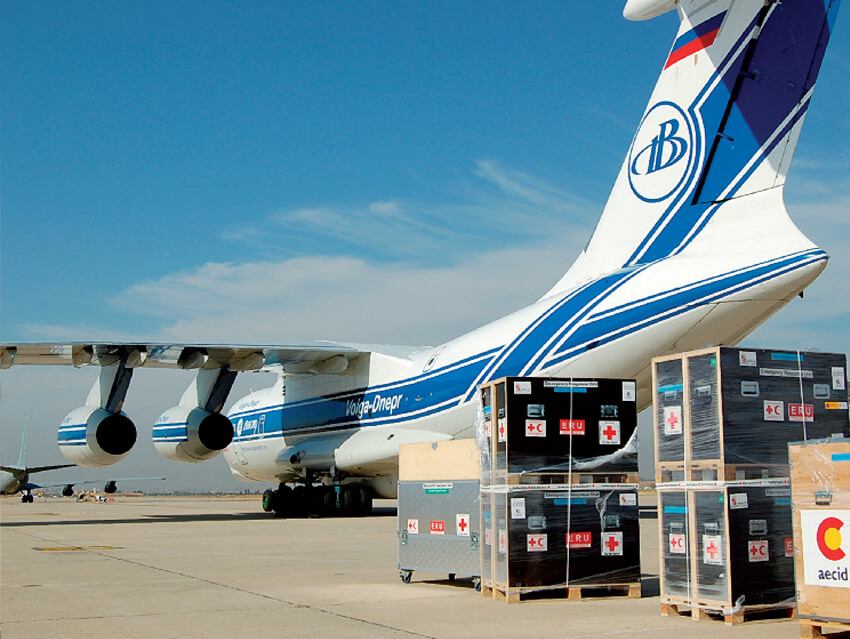 When the pandemic grounded air travel in 2019, it also brought grounding of a different kind: a chance to reflect on the aviation addiction which now constitutes 2 percent of all global carbon emissions. Far from settling into the flight-shaming craze, however, cleantech entrepreneur Val Miftakhov decided to find a solution. His company, ZeroAvia, is working to enable safe, zero-emission aviation by replacing conventional fuel engines with hydrogen-electric powertrains – and now counts Jeff Bezos, Bill Gates and British Airways among its investors. Here, Miftakhov speaks to Ella Johnson about how decarbonising aviation poses both a challenge and an opportunity, and why Elon Musk is missing out
When the pandemic grounded air travel in 2019, it also brought grounding of a different kind: a chance to reflect on the aviation addiction which now constitutes 2 percent of all global carbon emissions. Far from settling into the flight-shaming craze, however, cleantech entrepreneur Val Miftakhov decided to find a solution. His company, ZeroAvia, is working to enable safe, zero-emission aviation by replacing conventional fuel engines with hydrogen-electric powertrains – and now counts Jeff Bezos, Bill Gates and British Airways among its investors. Here, Miftakhov speaks to Ella Johnson about how decarbonising aviation poses both a challenge and an opportunity, and why Elon Musk is missing out

Val Miftakhov, Founder, ZeroAvia
LUX: What has your cleantech journey looked like so far?
Val Miftakhov: My first company, eMotorWerks, was in the EV charging space. We developed the world’s leading platform for EV battery aggregation to provide grid services, and the company was acquired in 2017. I then started looking at the next big opportunity for electrification, which was aviation. It fascinated me because I am a pilot myself, but also because I am a passionate believer in the enormous societal, cultural and economic benefit that aviation has brought to the world over the last century.
The aviation industry contributes less than 3 percent of global carbon emissions, but due to non-carbon climate forcing mechanisms (particulate emissions, nitrogen and sulphur oxides, and water vapour emission) the actual climate impact is somewhere between 5% and 10% already. That’s only set to worsen given that aviation is one of the fastest growing emission sources, and 5-10% could quickly become 25-50% by 2050 – especially as all the other pollution sources get cleaned up. Aviation, a truly majestic feat of human ingenuity and achievement, is under threat because of this. So, as a physicist by training, I started looking for the solutions.
Follow LUX on Instagram: luxthemagazine
LUX: So, what solution has ZeroAvia come up with?
Val Miftakhov: Naturally, as a successful EV start-up founder, I probably had a bit of a bias towards batteries at first, but the energy-to-weight ratio just makes it practically impossible to fly conventional fixed wing aircraft with any decent volume of passengers over any commercially useful distance. We quickly landed on hydrogen fuel cell technology as the answer. We believe it to be the best possible solution for tackling not just carbon emissions, but also the full climate impact of aviation.
LUX: How does it work?
Val Miftakhov: This approach converts hydrogen fuel into electricity in the fuel cells onboard the aircraft to power motors. This retains the benefits of zero emission that we have in battery electric vehicles, but with the required range and payload. Plus, a hydrogen-electric plane does not burn any fossil fuel, so there are no climate harming emissions, and the water vapour emissions can be very effectively managed due to a much lower vapour temperature compared to any combustion technology.

LUX: Hydrogen fuel cells have been in commercial use since the 1960s. Why has no one successfully brought it to aviation before ZeroAvia?
Val Miftakhov: Society didn’t really see jet fuel as a big problem until relatively recently: we had already invented the jet engine, we had cheap fuel, so what was there to worry about?
Hydrogen fuel cell technology has also developed a lot since the first introduction, and especially in the last 5-10 years. The first commercial hydrogen car was introduced to the market by Toyota just 6 year ago, and hydrogen heavy duty vehicles – trucks and buses – are just starting to be deployed. All of this very recent progress makes it possible to consider aviation applications that are even more advanced.
Another reason for accelerated adoption now is the progress on green hydrogen production technologies. Electrolysis equipment is now maturing and entering a rapid cost reduction phase – not unlike the solar panels 15 years ago. Already today, large scale electrolysis production results in the equivalent fuel costs below that of jet fuel for sub-20 seat planes.
LUX: How will ZeroAvia continue to achieve green electrolysis as the company grows from conceptual to commercial scale?
Val Miftakhov: Hydrogen to fuel aircraft can be created on the ground by splitting water (H2O) into hydrogen and oxygen using electricity to power an electrolyser. If the electricity used here is generated through zero-emission sources like solar or wind, the fuel itself can be created with zero-emissions as well.
The level of investment in both renewable energy and hydrogen infrastructure is positive and we are optimistic that the price of hydrogen fuel for aircraft will soon match jet kerosene even for larger aircraft and large operators. This will mean we can significantly lower operating costs for airlines, making adoption a no brainer. Of course, it is highly important that industry and government work together to ensure renewable supply and green hydrogen production can scale as quickly as possible and achieve price parity and beyond.
Read more: Dimitri Zenghelis On Investing In The Green Transition
LUX: How are you overcoming problems of hydrogen storage and fuel cell transportation?
Val Miftakhov: There are definitely challenges to overcome, but they are engineering challenges versus fundamental physical constraints, so it is achievable and exciting to be involved in. Storage is definitely one of the big issues and we believe we have designed appropriately for that with gaseous hydrogen for our initial models.
As we get beyond 40 seats, however, we will use liquid hydrogen fuel to overcome the space constraints of H2 gas. We intend to do this with existing airframes up to the very large, long haul jets when we believe that fundamental aircraft redesign will be necessary. Liquid hydrogen as a fuel also produces some fuel storage and infrastructure challenges we need to overcome in partnership with the aviation industry at large. As we expect the hydrogen-electric powertrains for these larger vehicles to become available around 2035-2040, new aircraft designs become quite possible on that timeframe.

Image By Victoria Primark
LUX: Why isn’t Sustainable Aviation Fuel (SAF) a long-term solution for the industry?
Val Miftakhov: These drop-in fuels are certainly critical to reducing carbon emissions today, but they are fundamentally a bridge technology as they cannot eliminate most of aviation’s climate impact, especially as the industry grows in line with demand. SAFs still rely on combustion which causes nitrogen and sulphur oxides, particulates, soot and high temperature water vapour at high altitudes. It’s still a cocktail that will have a huge impact on climate change. We need to invest and give room for true zero-emission technology to come through.
LUX: Elon Musk has described hydrogen fuel cell vehicles as ‘mind-bogglingly stupid’. Why do you think he is not backing them, and why should he be?
Val Miftakhov: He has plenty of other technologies that he is invested in! When you have created an automotive company that’s the most valuable in the world on the premise of battery-electric, it’s very easy to say that to people who champion fuel cell cars. And for the light duty personal vehicles Elon very well may be right. Hydrogen favours higher energy intensity, higher utilisation applications with more concentrated fueling infrastructure. Aviation fits the bill perfectly.
LUX: Are you planning to bring the hydrogen-electric powertrain model to cars in the future?
Val Miftakhov: At this point, we are focused 100 percent on aviation applications. It’s an easy choice: with Tesla and now all other major automakers pushing the EV revolution, it’s fairly certain that we will have rapid transition to EV ground vehicles. In contrast, aviation is at ground zero today, and while it constitutes a smaller part of emissions, it’s harder to abate, and growing quickly. It will be a much larger slice of the pie in 20-30 years.
LUX: What advice do you have for other cleantech entrepreneurs?
Val Miftakhov: My advice is to look at the challenge and find the most impactful, practical solutions based on the first principles and the real physics of the problem, and try to shed yourself of any bias you might bring into the endeavour.
Val Miftakhov is the founder of ZeroAvia









Recent Comments